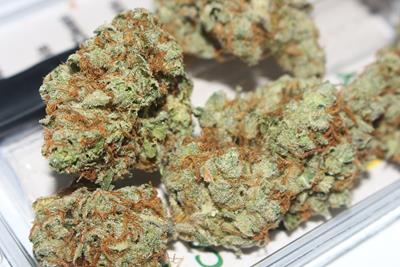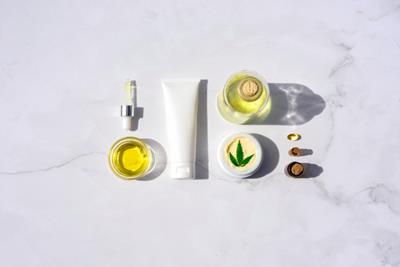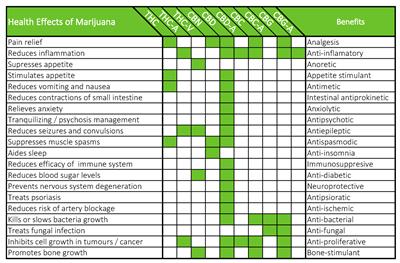
Monday February 22, 2021
View our Editorial PolicyThis content contains third-party advertisements. Click here to view PotGuide's advertising policy
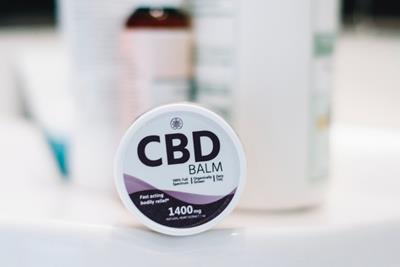 Health/Science
Health/Science
CBD has long been praised for its ability to help with inflammation and pain management, but how might this apply in the world of exercise and athletics? The early research on the subject appears promising. The apparent safety and efficacy that CBD exhibits makes it ideal for athletes, so much so that it is excluded from the list of prohibited substances enforced by the World Anti-Doping Agency (WADA). Furthermore, professional athletes across a myriad of disciplines have championed CBD and their own personal experiences with its effectiveness.
One of the most praised applications of CBD in athletics is CBD creams, for their ability to offer site-specific relief. Join PotGuide as we take a deeper look at how CBD creams and topicals interact with muscle recovery and pain management.
Understanding CBD Creams and Topicals
As many are aware, CBD (Cannabidiol) is one of the primary cannabinoids found on cannabis and hemp plants, and that it interacts with the body’s own internal endocannabinoid system (ECS). The ECS helps regulate numerous bodily functions such as pain, sleep, and appetite, and in general, helps the body maintain stasis (the stable neutral state of health). For example, when you need sleep, your body makes you sleepy to return to stasis. CBD is able to interact with the ECS by binding to two different receptors in our nervous system, known as CB1 and CB2.
CB1 receptors are concentrated primarily in the brain and central nervous system. These are the primary receptors that CBD interacts with when it is consumed via edibles, smoking or vaping, as it passes into the bloodstream and moves throughout the entirety of the body. As stated, here CBD affects more overarching bodily systems like sleep, hunger, healing, stress, and many more. CB1 receptors also help regulate pain by affecting how signals are perceived in the brain and spinal cord.

While CB2 receptors are also present in the brain, they are primarily concentrated in the body’s gastrointestinal, immune, and peripheral nervous systems (with a large amount appearing in our skin). Among CB2 receptors’ primary functions within these systems are to regulate pain and inflammation. CB2 mitigation of pain functions differently than CB1, affecting how pain signals are created at the source. When absorbed through the skin, this means that CBD can work on site-specific CB2 receptors. To put it simply, if you have a problem with your arm, you can put it right on your arm to help.
As CBD is fat-soluble, it also tends to saturate the skin and stay put, allowing for it to work for a longer time. The site-specific application and long duration of cannabinoid topicals make them quite different from other consumption methods and make them more ideal for certain applications than others, such as athletic injuries or skin irritation. Furthermore, when applied topically, cannabinoids cannot pass through into the bloodstream without further chemical agents, so there is considered to be little or no risk of intoxication (in general, cannabis topicals won’t get someone “high”).
CBD Sports Creams
It’s no exaggeration to say that sports creams for pain and inflammation (historically referred to as liniments) have been common for over 100 years (believe it or not, Bengay arrived in America in 1898). However, while they can be effective for helping mitigate pain, studies appear to support the finding that traditional sports creams do not reduce inflammation. Menthols and other cooling substances within them effectively work to “trick” our neuroreceptors for a while, so that we don’t experience the pain from soreness. What might appear as a reduction of inflammation from the product might actually be our bodies working normally to reduce inflammation while we’re distracted.
However, doctors have noted that the roots and seeds of hemp have the ability to help with skin inflammation as far back as the 18th century. It seems somewhat straightforward to see how cannabis liniments containing these two things might work well together, and for many years before cannabis prohibition that was the case. The two have been reacquainted recently, thanks to the 2018 Farm Bill and the proliferation of hemp and CBD products in general over the past decade or so.
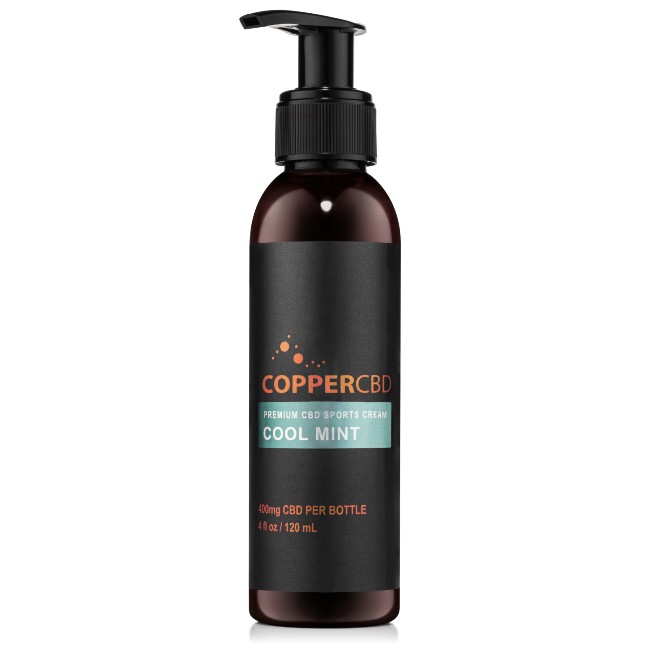
In 2021 it’s now commonplace to see pro athletes extol the praises of CBD, and CBD sports creams can be found readily available online. By and large, however, good modern CBD sports creams are really just high-quality formulations of the same time-tested ingredients of hemp liniments of the past. Take for example a modern product like Copper CBD’s Sports Cream. If you check the ingredients, it’s a mixture of known soothing plants like olive oil, lavender, and rosemary, with traditional menthol and mint, and well, just CBD. While the CBD and base ingredients are of a far higher grade than you’d find a century ago, the concept is the same.
Amazingly, what medical journals noted a hundred years ago appears to hold up well today. Extensive research is still needed to understand more specifically how CBD interacts within the body, but what has been studied is encouraging. We’ll take a look at some more specifics of what is known below.
CBD and Pain Management
When we work out and play sports, we exert our muscles more than they are typically used to, which causes damage to tiny muscle fibers. Our bodies then flood the damaged areas with blood and proteins to help repair the damage, causing inflammation. The inflammation excites nerves nearby, and our brains then experience this inflammation as pain, letting us know that something is damaged and needs repair. Proteins in our body work to repair the damage with new cells and filter away the refuse as it heals, and the inflammation reduces. As inflammation is reduced, pain will reduce as well.
This is why standard treatments of exercise injuries, as echoed by the National Health Service, largely involve measures to help manage inflammation: rest, ice packs, painkillers, and massage. CBD has been shown to reduce inflammation in a number of studies, but specifically, transdermal CBD application has been shown to decrease inflammation and pain related to arthritis in studies with mice.

So CBD cream has been shown to reduce inflammation, and reducing inflammation reduces pain and spurs recovery, but that’s not the only way that CBD affects pain. CBD helps to stop the experience of pain as well. As mentioned, both CB1 and CB2 receptors affect the experience of pain.
In a review, “Cannabinoids in the management of difficult to treat pain,” CBD’s capabilities as an analgesic (something that reduces pain) was highlighted as a possible better alternative to traditional NSAIDS painkillers like acetaminophen.
Much like the other herbal or medicinal ingredients that change how we perceive pain signals, so does CBD. Furthermore, CBD might even work on pain via additional pathways not even related to CB receptors, as reported in the Journal of Experimental Medicine back in 2012. While it’s clear that there are fascinating aspects of how CBD affects pain still yet to be understood, what we do know seems to have reasonable support.
When these properties are combined with the already soothing qualities of traditional sports cream ingredients, one starts to see the basis of a very effective combination. In a preparation like the Copper CBD one mentioned, lavender can start relaxation and menthol can tingle away the pain, while CBD gets to work doing the heavy lifting.
CBD and Muscle Recovery
As mentioned, torn muscle fibers are believed to be the source of pain from muscle injury, and thus treating muscle pain involves not just the nerves that report the pain and the inflammation associated with it, but also the repair of the muscles themselves. Skeletal muscle fibers contain both CB1 and CB2 receptors as well as other cannabinoid pathways similar to brain cells, and CBD and other non-euphoric cannabinoids have been shown to promote muscle growth.
Additionally, the common knowledge for decades has been that mitigating inflammation helps to spur recovery, but the reality might be much more complex than that.

Recent findings appear to demonstrate that a certain amount of inflammation is needed to signal the body to initiate repairs. In general, physicians use the reporting of pain to gage how much or how little treatment is needed, but those guidelines might now need to be reassessed. How might CBD play a role? As an agent of homeostasis, CBD might be able to help our ECS determine what levels are optimal. Similar to how it helps our bodies determine when we should be sleepy, it might help communicate how much inflammation is needed for repair.
The Wrap Up
As with all things cannabis, more research will help to illuminate the inner workings of how CBD helps mitigate pain and inflammation while helping with muscle recovery, but a lot of what is known appears to be straightforward. We know a lot about the constituent parts of the equation: sports creams help with immediate relief, CBD has been shown to reduce inflammation and deal with pain, and CBD can affect muscle growth. As America moves ever closer to federal legalization, and CBD spreads further around the world, it seems to be only a matter of time before these things can be better studied in tandem.
In the meantime, there are excellent options to try today (as mentioned above, Copper CBD is a great example) to see if CBD creams and topicals might help with your sports aches and pains, especially where other CBD delivery methods may have failed.
How have CBD sports creams worked for you? Discuss in the comments below!





